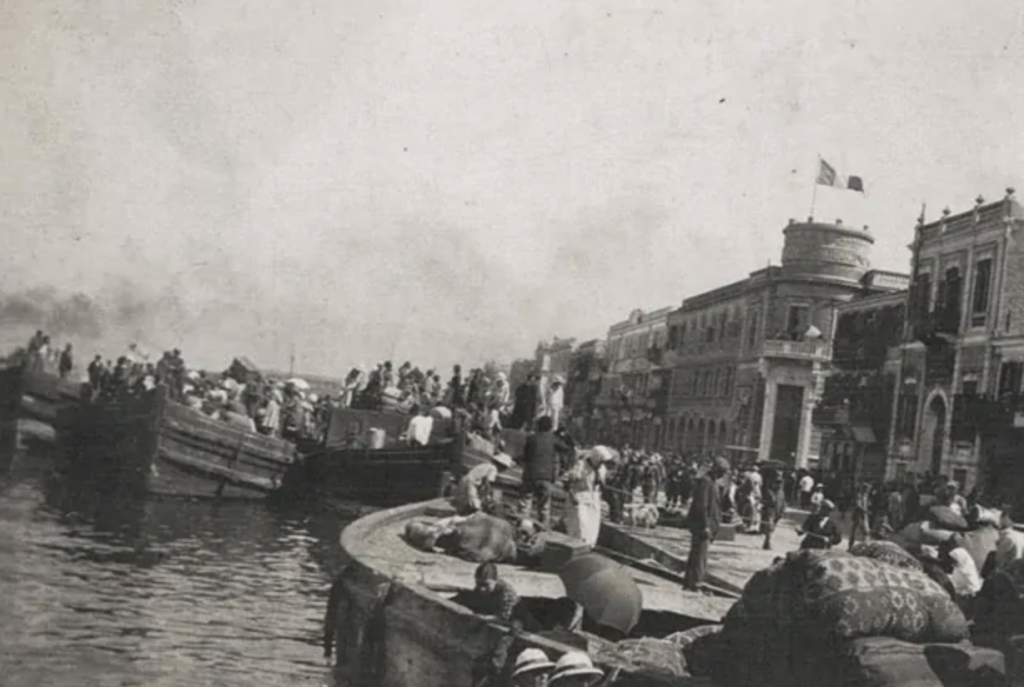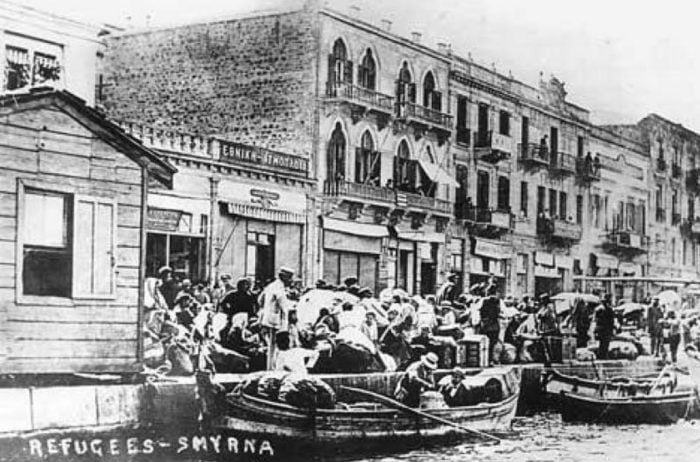A two-sided postcard with a stamp has been dedicated to “Armenian History: Smyrna” and been put into circulation.
The HayPost postcard depicts the St. Stepanos Armenian Church and St. Fotini Greek Church in Smyrna with the inscription in Armenian, English and Greek: “THE LAST PHASE OF THE ARMENIAN & GREEK GENOCIDES."
A 2-sided postcard w/ 1 stamp dedicated to the theme “Armenian History. Smyrna” has been put into circulation.
The postcard depicts St. Stepanos ARM Church & St. Fotini Greek Church in Smyrna & the inscriptions “THE LAST PHASE OF THE ARMENIAN & GREEK GENOCIDES” written in 🇦🇲🇬🇧🇬🇷 pic.twitter.com/TiTtTSoUvT
— RE:PUBLIC PRESS (@REPUBLICPRESS_) April 12, 2022
The Armenian Ambassador to Greece Tigran Mkrtchyan said "Armenia honours the memory of the Smyrna Catastrophe by issuing stamps dedicated to Smyrna, including Armenian presence therein."
#Armenia honors the memory of the #Smyrna100 Catastrophe by issuing stamps dedicated to #Smyrna, including #Armenian presence therein/Αρμενικά Ταχυδρομεία έθεσαν στην κυκλοφορία μια θεματική καρτ ποστάλ διπλής όψεως με ένα γραμματόσημο αφιερωμένο στο θέμα Αρμενική Ιστορία. Σμύρνη pic.twitter.com/7FavDJPI5s
— Tigran Mkrtchyan (@TMkrtchyan) April 12, 2022
On September 13, 1922, Turkish soldiers at the end of the three-year-long Greco-Turkish War lit fire to Smyrna’s Greek and Armenian quarters and went on a rampage of rape, pillage, and mass murder.
Soon, all but the Turkish quarter of the city was in flames as hundreds of thousands of refugees crowded the waterfront, desperate to escape.
The Great Fire of Smyrna or the Catastrophe of Smyrna, destroyed much of the port city of Smyrna in September 1922.

Eyewitness reports state that the fire began on 13 September 1922 and lasted until it was largely extinguished on September 22nd.
It occurred four days after Turkish forces regained control of the city on 9 September 1922, effectively ending the Greco-Turkish in the field, more than three years after the Greek army had landed troops at Smyrna on 15 May 1919.
Estimated Greek and Armenian deaths stand at around 100,000.
Approximately hundreds of thousands of Greek and Armenian refugees crammed the waterfront to escape from the fire. They were forced to remain there under harsh conditions for nearly two weeks.
Turkish troops and irregulars had started committing massacres and atrocities against the Greek and Armenian population in the city before the outbreak of the fire.

Many women were raped, tens of thousands of Greek and Armenian men were subsequently deported into the interior of Anatolia, where many of them died in harsh conditions.
The subsequent fire completely destroyed the Greek and Armenian quarters of the city; the Muslim and Jewish quarters escaped damage.

To this day, Turkish officials deny responsibility for this horrendous attack, which ended so many innocent lives.
Smyrna was a Greek city located at a strategic point on the Aegean coast of Anatolia.
Due to its advantageous port conditions, its ease of defence, and its good inland connections, the city rose to prominence.
The name of the city since about 1930 is now İzmir.
Ibn Batuta found it still in great part a ruin when the homonymous chieftain of the Beylik of Aydın had conquered it about 1330 and made his son, Umur, governor. It became the port of the emirate.
During the Smyrniote Crusade in 1344, on October 28, the combined forces of the Knights Hospitaliers of Rhodes, the Republic of Venice, the Papal States and the Kingdom of Cyprus, captured both the harbor and city from the Turks, which they held for nearly 60 years; the citadel fell in 1348, with the death of the governor Umur Baha ad-Din Ghazi.
In 1402, Tamerlane stormed the town and massacred almost all the inhabitants. The Mongol conquest was only temporary, but Smyrna was recovered by the Turks under the Aydın dynasty after which it became Ottoman, when the Ottomans took over the lands of Aydın after 1425.
Greek influence was so strong in the area that the Turks called it "Smyrna of the infidels" (Gavur İzmir). While Turkish sources track the emergence of the term to the 14th century when two separate parts of the city were controlled by two different powers, the upper İzmir being Muslim and the lower part of the city Christian.
During the late 19th and early 20th century, the city was an important financial and cultural centre of the Greek world.
Out of the 391 factories 322 belonged to local Greeks, while 3 out of the 9 banks were backed by Greek capital. Education was also dominated by the local Greek communities with 67 male and 4 female schools in total.
The Ottomans continued to control the area, with the exception of the 1919–1922 period, when the city was assigned to Greece by the Treaty of Sèvres.
The most important Greek educational institution of the region was the Evangelical School that operated from 1733 to 1922.
READ MORE: Distortion of history by Erdoğan’s MP: “Greeks and Armenians burned Smyrna.”


